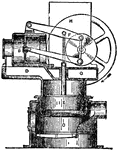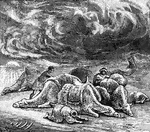
Sand Storm in the Desert
During the prevalence of the simoom, particles of fine sand are carried into the atmosphere and obscure…

Savart Bell and Resonator
"...represents a Savart bell and resonator. The length of the resonant air-column is changed by means…
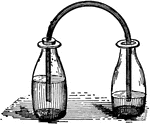
Bottle Siphon
"Partly fill two bottles with water. Connect them by a bent tube that fits closely into the mouth of…
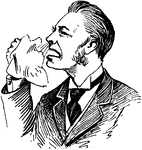
Sick Man Sneezing
A sneeze is a semi autonomous, convulsive explosion of air form the lungs through the nose and mouth,…

Effect of a metal core in a solenoid
"Illustrating the effects of introducing an iron core into a solenoid. In the upper firgure, the air…
Stock, right side view
"The parts are the butt, A; small, B; magazine well, C; barrel bed, D; air chamber, E, which reduces…
Stock, top view
"The parts are the butt, A; small, B; magazine well, C; barrel bed, D; air chamber, E, which reduces…
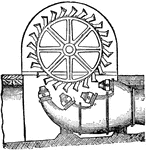
Pelton Wheel Turbine
"Turbine is, in mechanics, a term formerly confined to horizontal water wheels, the revolution of which…
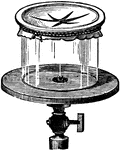
Vacuum
"Over the upper end of a cylindrical receiver, tie tightly a wet bladder or sheet of writing paper and…
